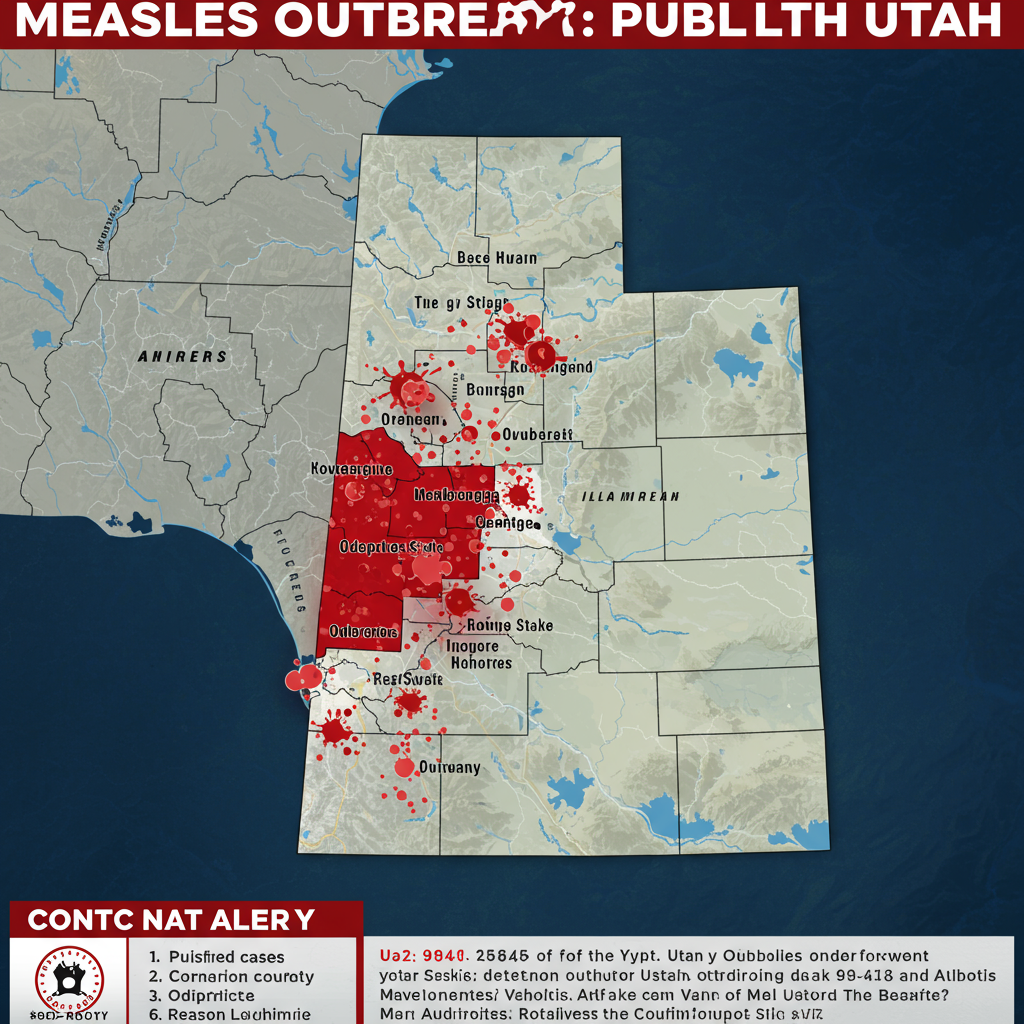Utah health officials are sounding the alarm after confirming two additional adult cases of measles, bringing the total number of diagnosed infections in the state to three within the last week. These new diagnoses highlight growing concerns about local transmission of the highly contagious virus.
According to the Utah Department of Health and Human Services, the two latest individuals diagnosed are both unvaccinated adults. One resides in Utah County, while the other is located in the southwest health district. Officials state that these two cases are not connected to each other, nor are they linked to the initial case reported last week.
A Shift: Local Origin Suspected
The first measles case, confirmed last Friday, was also an unvaccinated adult in Utah County. This marked the first instance of measles reported in Utah since March 2023. More significantly, state epidemiologist Dr. Leisha Nolen indicated that the individual had no recent travel history outside of Utah, strongly suggesting the infection originated within the state. This inability to pinpoint an external source for the initial case raises the possibility of additional undetected cases circulating locally, a concern echoed by Dr. Nolen who stated officials “do have to suspect there are additional measles cases in Utah.” While the origin for the two new cases isn’t definitively known, the health department believes local spread is occurring.
Contact Tracing Underway
Public health investigations are actively working to identify where potential exposures may have occurred for all cases. Nicholas Rupp, a public information officer, explained the rigorous process of contact tracing involves working with infected individuals to reconstruct their movements and contacts during their infectious period, which spans nine days (starting before symptoms appear). Officials use tools like calendars and financial records to help patients recall their whereabouts, describing it as a difficult but vital public health practice.
For the first diagnosed individual, officials have identified specific public locations they visited while infectious but before their diagnosis. Anyone who was present at these locations during the specified times, or up to two hours after the person left, could have been exposed to the virus:
Parkway Health Center in Orem: June 13 (Specific time is still being confirmed by officials)
Timpanogos Regional Emergency Room in Orem: June 14, between 2:14 p.m. and 7:02 p.m.
Understanding Measles Symptoms and Risks
Measles is one of the most contagious known diseases, capable of spreading through the air and remaining infectious in a space for up to two hours after an infected person has left. Initial symptoms typically appear 7 to 14 days after exposure, though it can take up to three weeks. Watch for:
A high fever, often exceeding 102.2°F
Cough
Runny nose
Red, watery eyes
About four days after the fever begins, a characteristic rash appears. It usually starts at the hairline and spreads downwards across the face, neck, and body.
If you suspect you have been exposed to measles or begin to show symptoms, it is critical to call a healthcare provider by phone FIRST before visiting a clinic or hospital. This allows staff to take necessary precautions to prevent spreading the disease to others.
Measles is not a minor illness and can lead to serious complications, especially in vulnerable populations including young children, pregnant women, and individuals with weakened immune systems. Nationally, the CDC has reported over 1,200 confirmed measles cases across more than 34 states this year, with three deaths reported. Measles hospitalizes about 1 in 20 children who contract it.
Protection Through Vaccination
Health officials emphasize that the most effective way to protect yourself and prevent the spread of measles is vaccination. The measles-mumps-rubella (MMR) vaccine is safe and highly effective, providing approximately 97% protection against infection after receiving the recommended two doses. Even if a vaccinated person contracts measles, the illness is typically much milder.
While over 90% of Utahns are vaccinated against measles and are considered well-protected, there has been a concerning decrease in childhood vaccination rates in recent years. This leaves unvaccinated individuals, including infants too young to be vaccinated (under 1 year old), particularly vulnerable.
Officials urge all Utahns to check their immunization records and ensure they are up-to-date on their MMR vaccine, especially if unvaccinated or unsure of their status. Vaccination is the key tool in controlling measles outbreaks and preventing further cases in the state.




